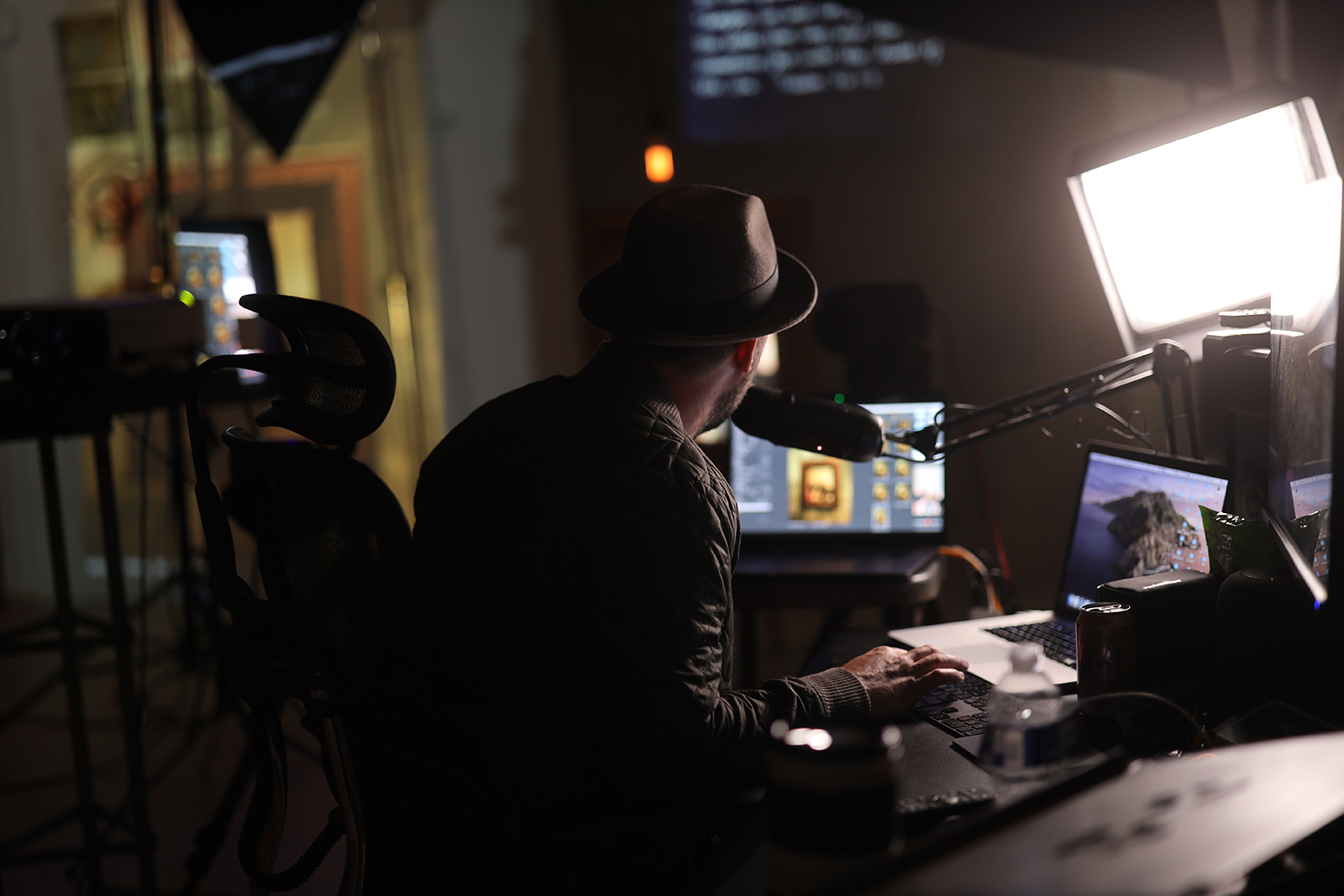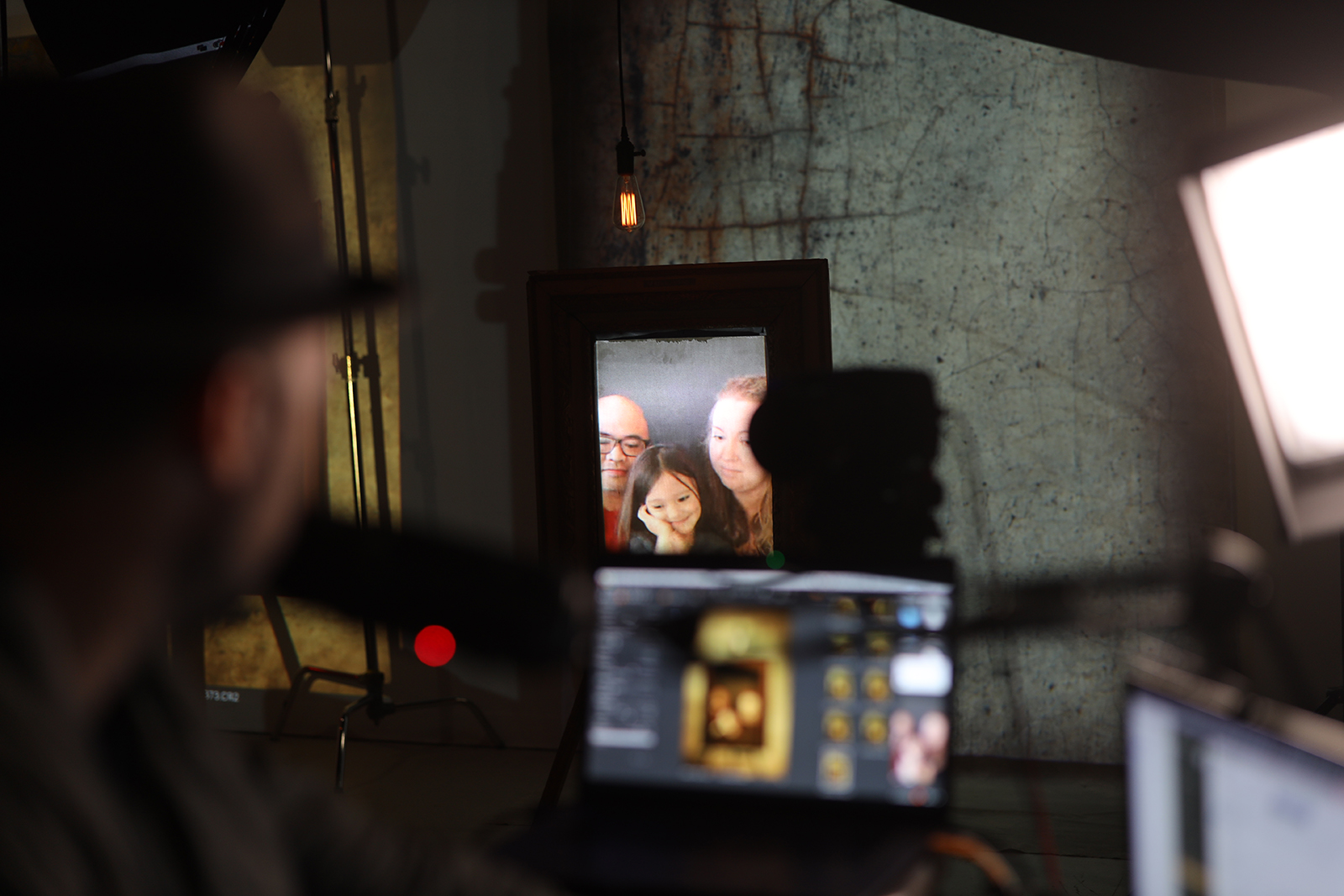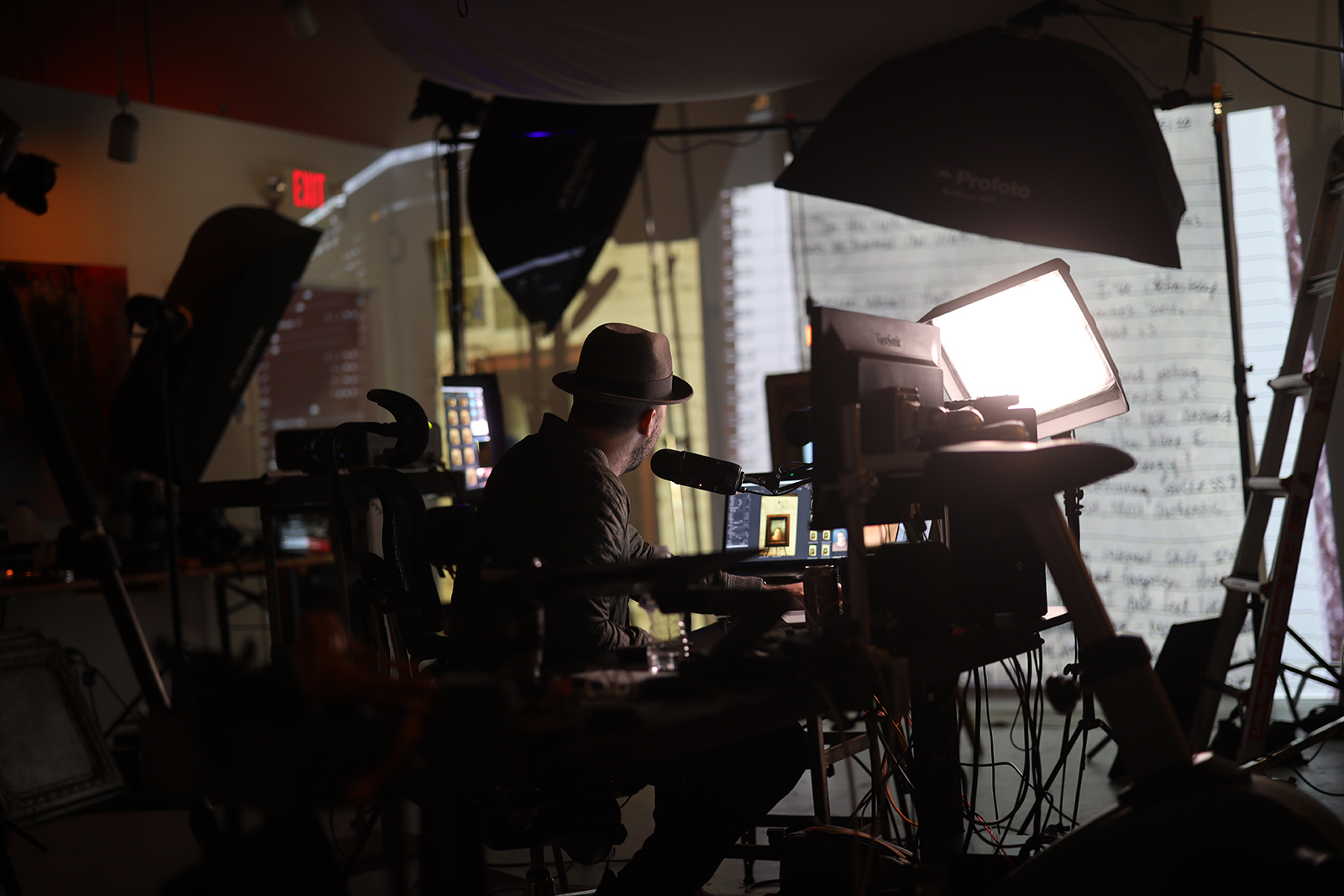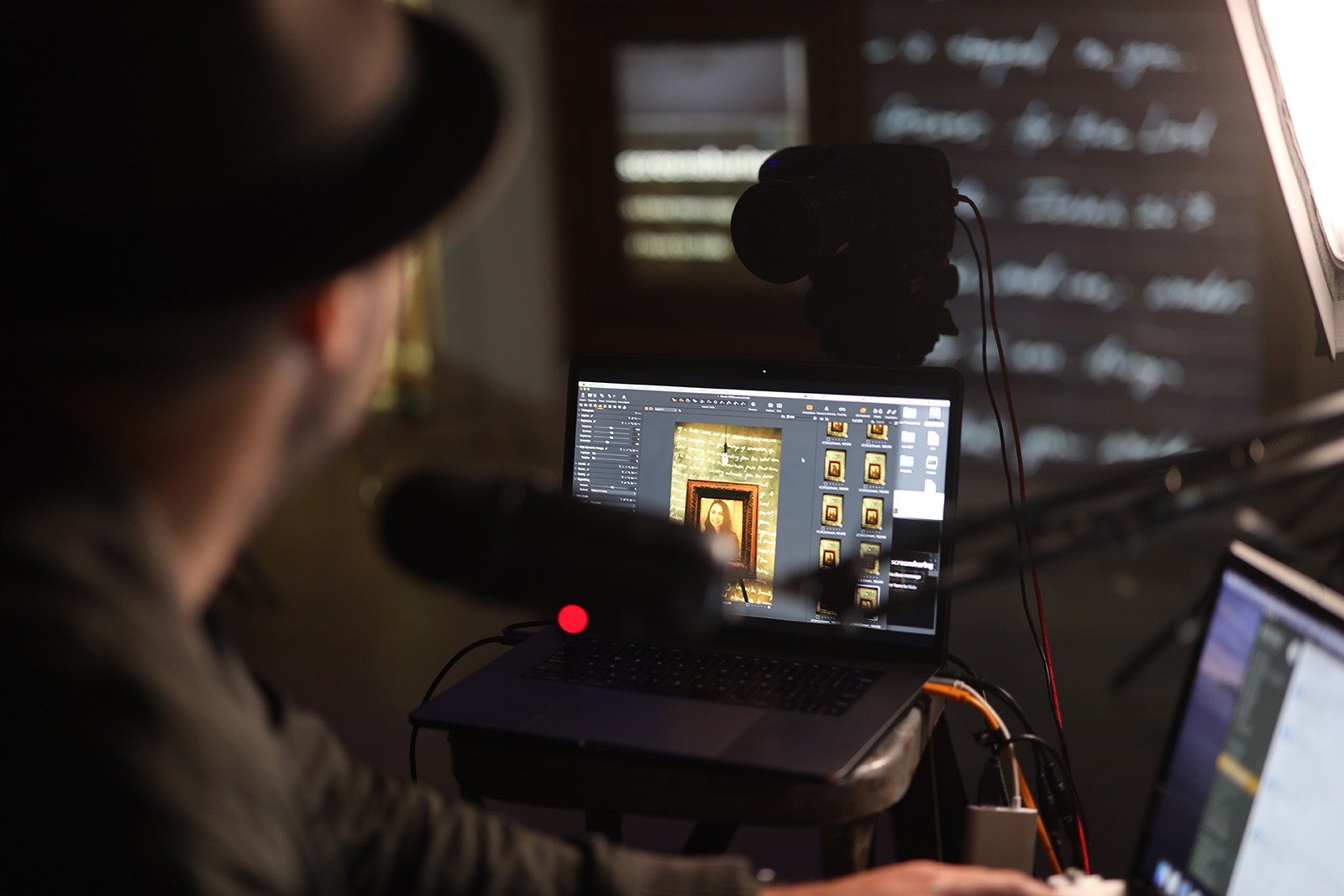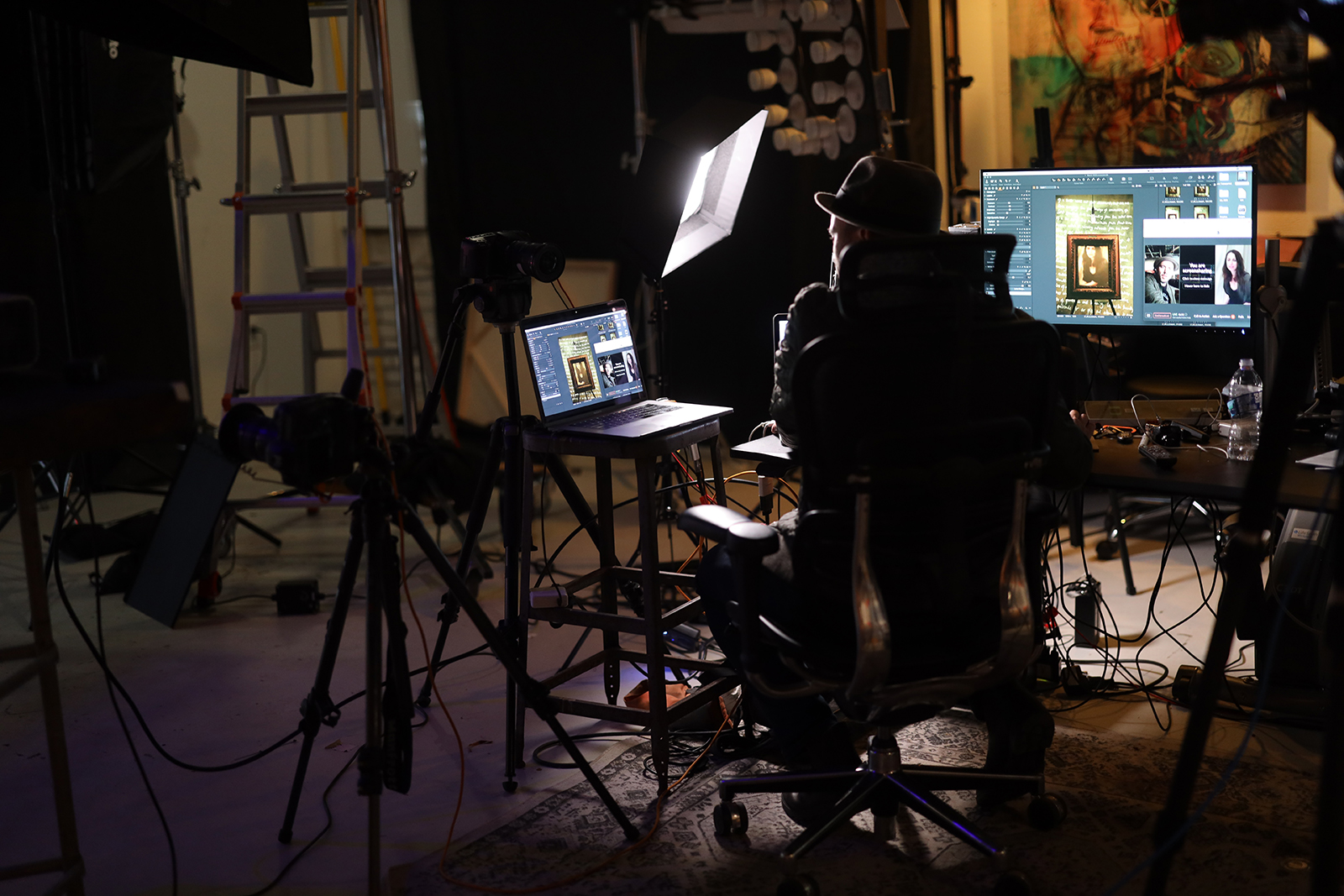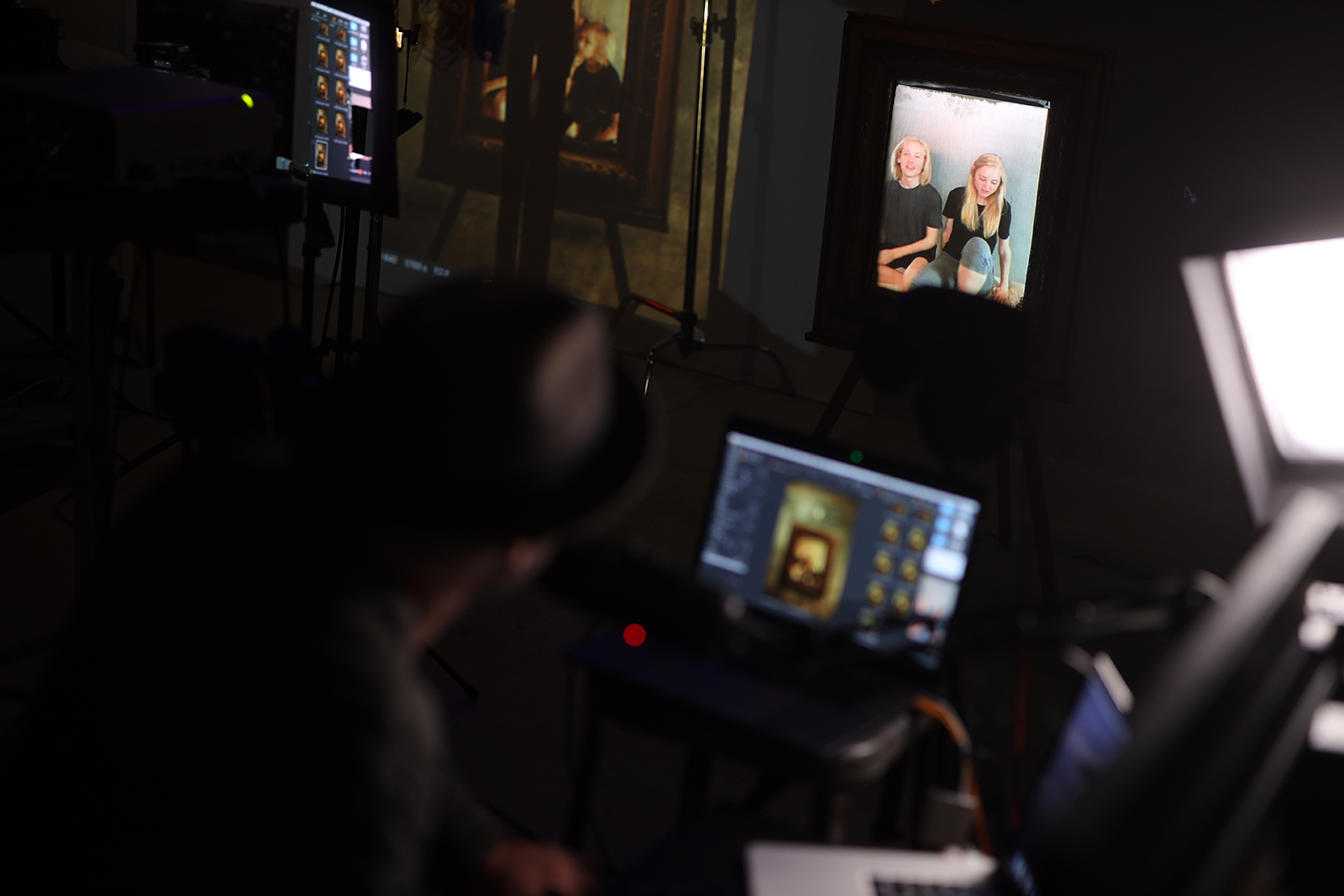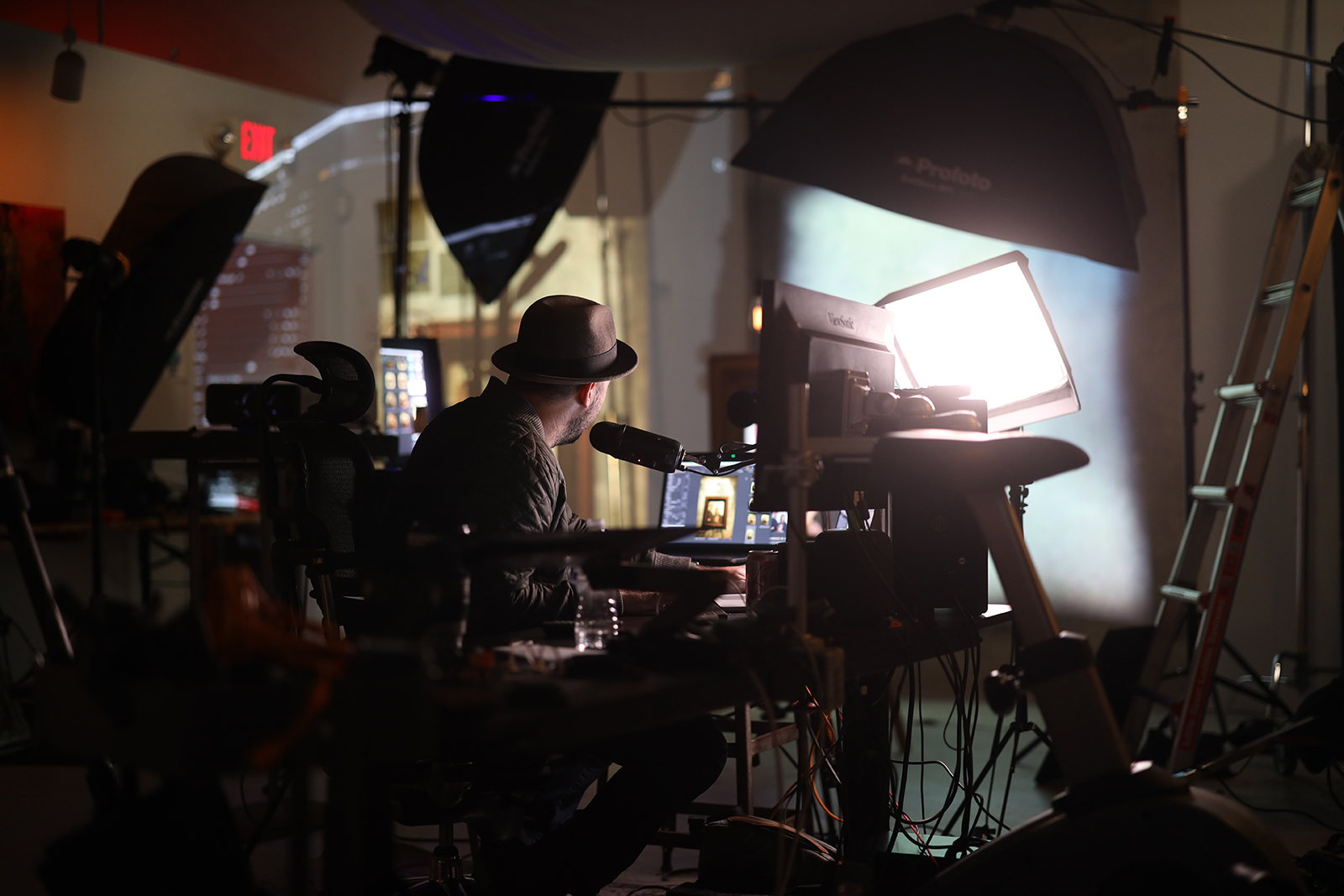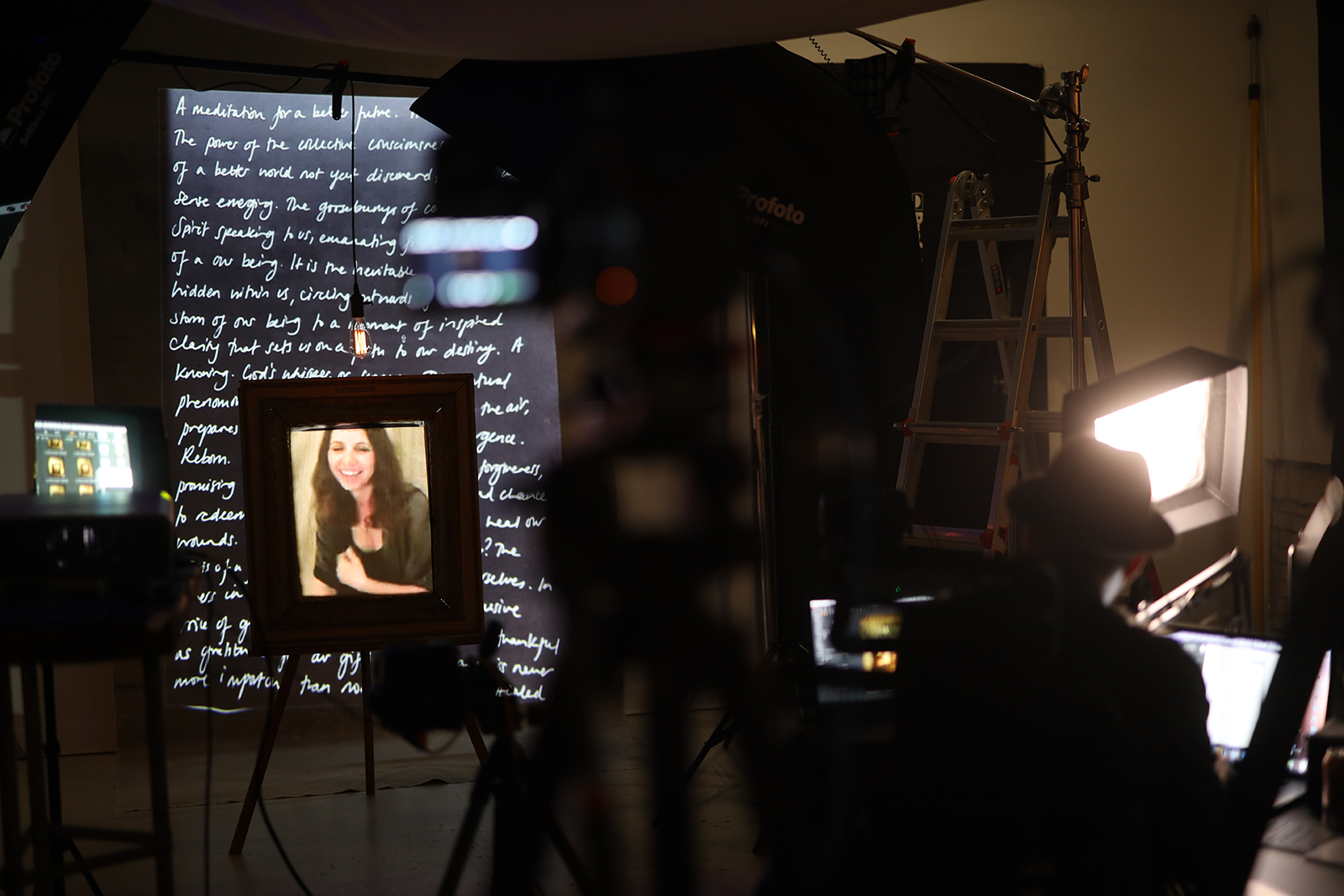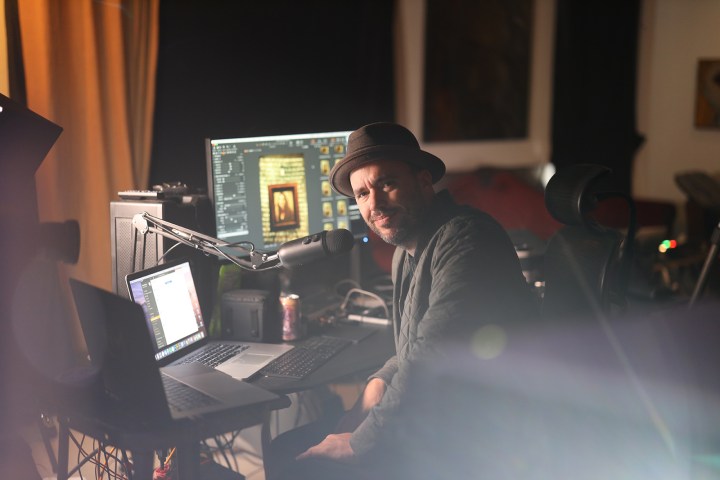
A camera shutter clicks. “That’s awesome, I think we’ve got it,” photographer Jeremy Cowart says from behind the camera.
An image pops up on the computer screen, a portrait, already framed. The projection fades and Cowart is left standing in his empty Tennessee studio, alone except for an assistant — like he has been since the shoot started.
Cowart, like many photographers across the globe, cannot safely bring portrait clients into his studio amid the coronavirus pandemic. Instead, the portrait photographer — who often photographs celebrities and musicians — is using technology to safely “bring” clients into his studio while they remain quarantined at home, in locations across the globe, in a project he calls Love Transported.
In front of his Canon 5DS and 24-70mm f/2.8 lens sits a vintage picture frame, empty except for rough wood backing. The portrait subject enters the frame via a projector, which is connected to CrowdCast, a livestreaming service similar to Zoom.
A second projector is aimed at the backdrop, allowing Cowart to quickly flip through different backdrops, which he’s created through his own photographs and graphic designs. Two Profoto strobes are also part of the setup, one directed at the frame, one at the backdrop, both with a gird and softbox. An assistant runs the livestream, allowing Cowart’s followers to watch from behind-the-scenes.
“The vision is really just to give people a forever portrait during a moment in world history,” Cowart said. “For the rest of our lives, we will remember coronavirus.”
The setup means that participants are photographed through their own webcams — many of which are pixelated and blurry. But Cowart, who often works with intentional blur in his own work, makes the imperfections part of the shot.
“When they come into my studio, it can really be a pixelated, blurry feed,” he said. “But at the same time, I kind of love it. I was just looking at a portrait minutes ago that was probably the blurriest, most pixelated shot, but there’s something stunning about it. There’s a abstract painterly quality to it.”
The texture of the wood that the portrait is being projected onto, the vintage frame, and pixelated webcam work together, along with a prism system over part of the lens, to create a portrait with a grunge aesthetic without extensive photo editing. Cowart applies RAW processing, including color and contrast adjustments, but doesn’t otherwise alter the image. Using tethering and Capture One, the edits are applied to the photos as they come in, which means by the end of the shoot, he’s already almost finished with the images.
While the virtual shoots have allowed Cowart to continue his portrait business while many businesses are shut down, the unique setup also allows him to photograph people across the globe without leaving his studio. “The fun part for me personally is that I don’t know who’s coming next, I don’t even see the names,” he said. “One second I have a family that I know in real life and my best friends are on the frame, and the next person is from Dublin, and the next from South Africa, and the next a musician I photographed before. I never know who I’m photographing next and what part of the world they will be coming from.”
The idea for the Love Transported series came after Cowart saw how other photographers responded to the pandemic, from taking front porch portraits with a telephoto lens to shooting portraits through FaceTime. Cowart had worked with projectors before in his fashion work and saw the tool as a way to bring his own style to the concept.
Cowart is continuing to shoot projector portraits — with sign-ups available and live streams from Cowart’s Facebook — but he has further visions for the project, including photographing health care workers. He also hopes to photograph family and friends who are social distancing by projecting a portrait on the background as well as the frame.
“Once someone is projected on a flat surface, there’s only one camera angle,” he said. “But I’ve really enjoyed it and I’ve been blown away by how fun it is. I encourage other photographers to try it — it’s kept my business profitable, and I welcome other photographers to steal it. It’s great to keep connecting and hearing stories.”


